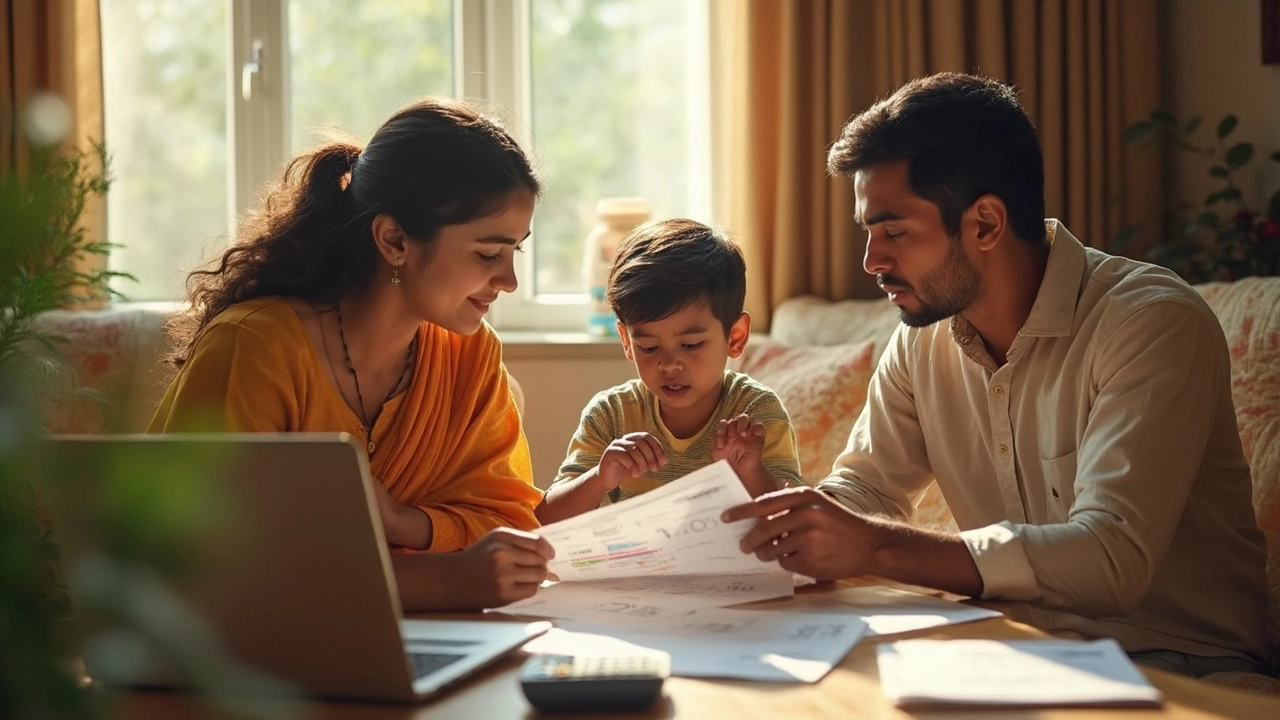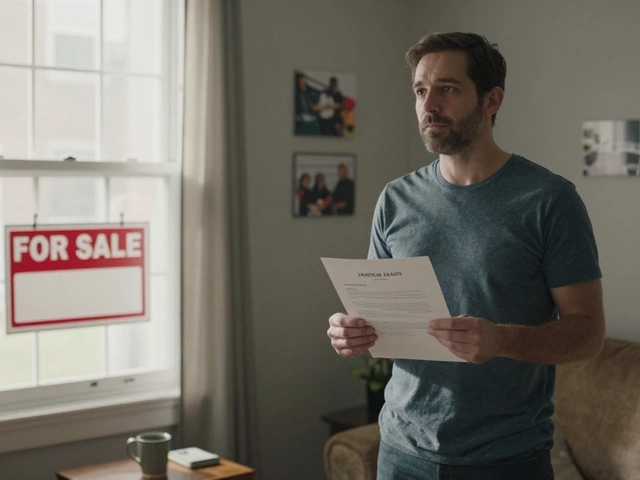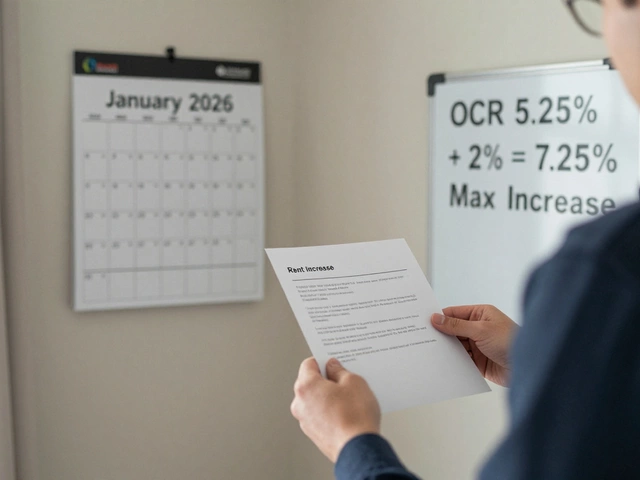Is 600 Sq Ft Enough for a 1 BHK Apartment? Real Space Insights & Tips
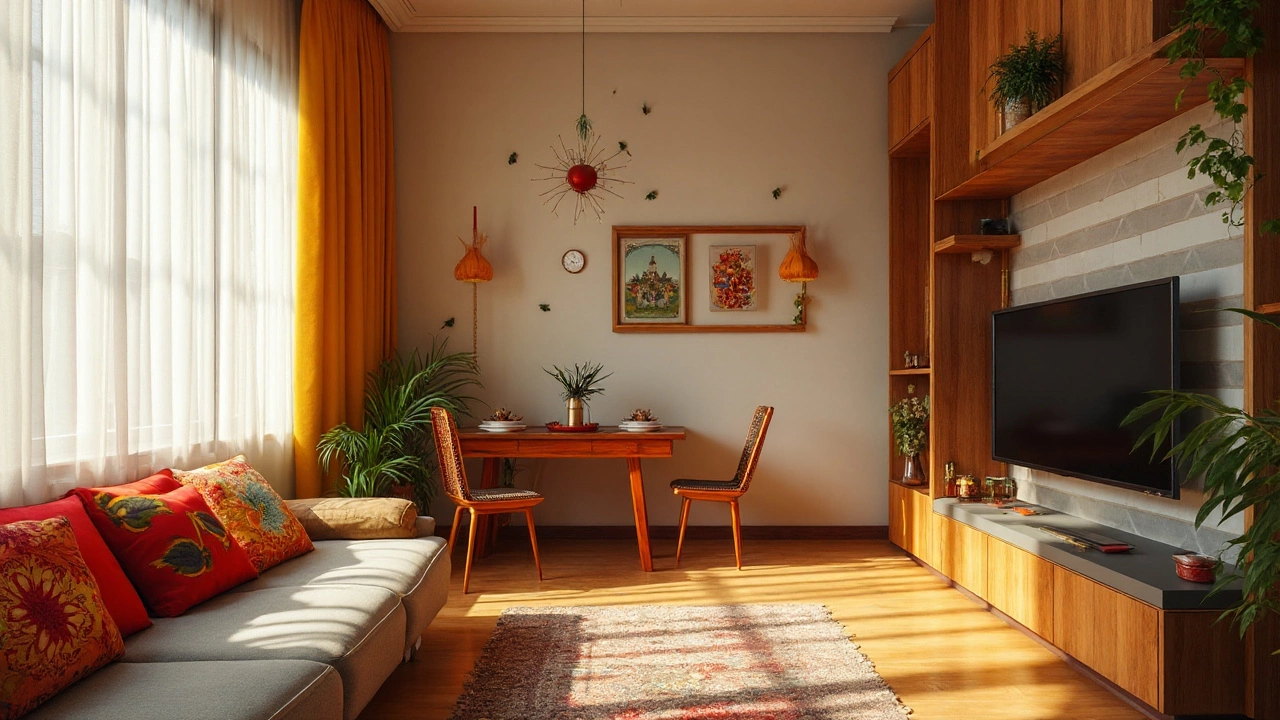
So, imagine waking up in a place that's your own, but it's got just 600 square feet to work with. Sounds tight, right? Yet, when you break it down, 600 sq ft actually lines up with loads of 1 BHK apartments being built now, especially in most Indian metros and even smaller towns these days. Why? Land shortage, crazy prices, and a whole generation of people who'd rather put money into experiences than square footage. Ever thought about how much space you really need to live, work, eat, chill, and maybe store a few regrettable purchases? Let's see if 600 square feet covers all bases—or if it forces you to Marie Kondo every corner.
What Is a 1 BHK Like in 600 Sq Ft? Reality Check
A 1 BHK apartment with a 600 sq ft layout usually packs a bedroom, a hall/living room, a kitchen, and one bathroom. In actual floor plans (not just the glossy ones on a builder’s website), the bedroom often fits a queen-size bed and a basic wardrobe. The living room handles a sofaset (though corner sofas rule for space-saving), a small entertainment setup, and maybe a tiny dining table. Kitchens? Modular is in, and closed kitchens are often just a galley with barely enough room for two people dancing around each other with plates. Bathrooms are compact but functional, mostly with standing showers, not soaking tubs.
Here's a simple average breakdown of 600 sq ft usage in a modern 1 BHK:
| Room/Area | Average Size (sq ft) |
|---|---|
| Living Room | 130-150 |
| Bedroom | 110-120 |
| Kitchen | 60-80 |
| Bathroom | 40-60 |
| Balcony/Utility | 30-40 |
Major Indian cities have actually shrunk the average unit sizes over the years—PropTiger reported in 2023 that NCR apartments (Noida/Gurgaon) dropped from 1,500 sq ft on average in 2015 to below 1,100 in 2023, with most 1 BHKs clocking 550-650 sq ft. Pune and Bangalore aren't much different. This means 600 sq ft has become the new sweet spot for singles, young couples, and even retirees looking to downsize.
Before you panic about feeling boxed in—most 1 BHKs at this size include clever storage, sliding doors, and two-in-one furniture to make small spaces not just liveable, but sometimes kind of fun. No, you won’t be throwing Gatsby-sized parties. But movie nights for two, or hosting three friends for pizza and board games? Totally doable if you keep clutter at bay.
Living Comfortably in 600 Sq Ft: What Works and What Doesn't
The first thing people ask: “Will I feel cramped?” It depends a ton on what you bring with you, and how you use the space. Actual surveys from Bangalore and Mumbai (2024) showed that most residents felt comfortable as single adults—or even couples—if they kept personal possessions under control. Problems start when you try to fit in big families, serious hobbies needing lots of equipment (think photography, drum kits, or a home gym), or an army of shoes.
The good: Cleaning is fast—grab a mop, make a few dashes, and you’re done. Bills stay low, since cooling, heating, and lighting smaller spaces eat up less cash & energy. Plus, if you work long hours outside, you won’t resent dead space in a home you barely see except to crash and eat something quick.
The bad: Entertainers, packrats, or folks who want their own work-from-home office face limits. There’s usually just one main living zone, and while a breakfast bar or folding table can make do as a desk, it’s not the same as a dedicated office. If you’re a couple, it can test your patience: If one’s on a work call and the other wants Netflix, headphones become best friends. Also, guests who want to stay overnight often end up on a sofa-bed (if you even have room for one). Storage is gold dust, which means those jeans-that-might-fit-someday will probably need to go.
Still, a lot of folks use vertical shelves, under-bed storage, and even wall-mounted drop-leaf tables to carve out more breathing room. These tweaks don’t just work—they’re almost a necessity when you cross the 6-month living mark.
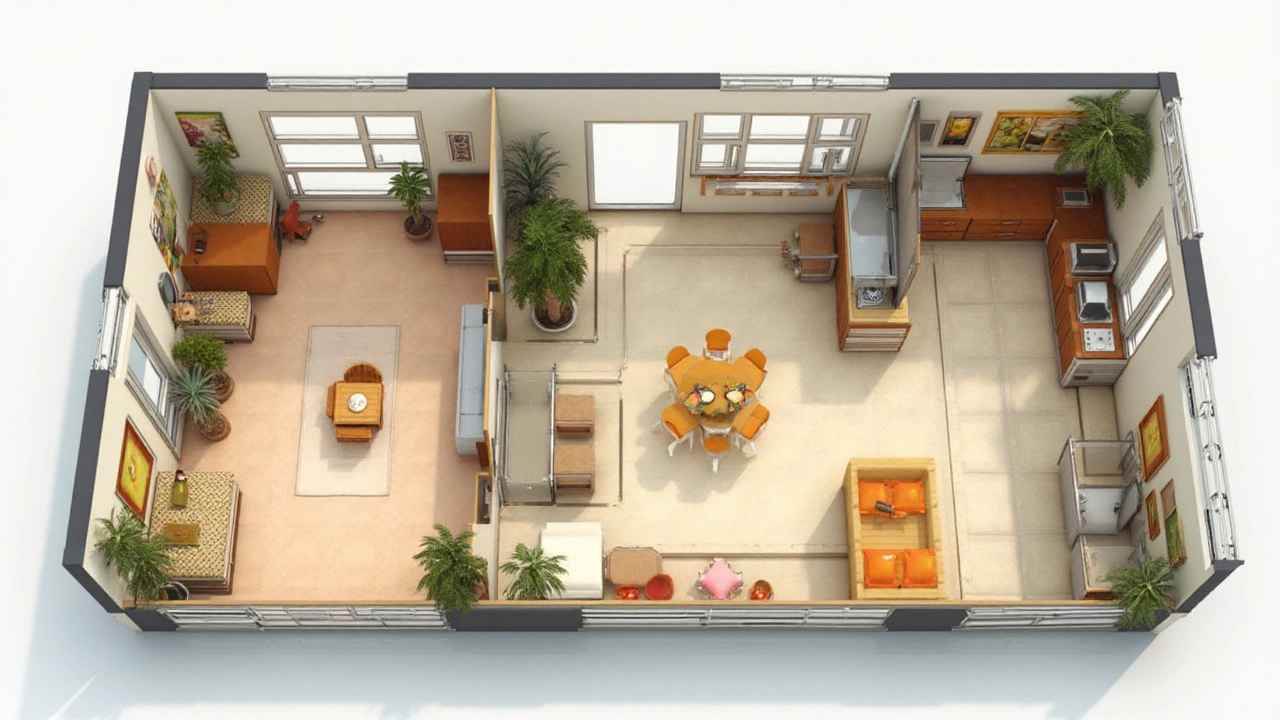
Smart Design: Tips for Making the Most of 600 Sq Ft
If you’re jumping into a 600 sq ft 1 BHK (or already stuck inside one), there are tricks the pros swear by:
- Light colors on walls and furniture bounce sunlight and make a room look bigger. Pure white isn’t needed—try soft greys, pale blues, or sandy tones.
- Mirrors add depth. A big mirror on a main wall can double a room visually.
- Sliding or pocket doors eliminate that awkward space swing doors eat up.
- Foldable and multi-use furniture rules: Sofa beds, expandable kitchen tables, and ottomans with storage inside are a must.
- Go vertical with shelves and tall cupboards. Leave floor space open where possible so it feels less cluttered.
- Declutter ruthlessly. Use the "one in, one out" rule for clothes, gadgets, and even cutlery.
- Have a dedicated storage box or trunk for stuff you barely use—but don’t let it overflow. When it’s full, it’s time to purge.
- Hang pots, utensils, or racks on kitchen walls to save precious countertop space.
- Balcony space, if you have it, can work as a mini-garden, drying area, or even a reading corner with fold-out stools.
- Invest in wiring—hidden cables, wall-mount TVs, and smart plugs make tech less messy in tiny spaces.
Here's the big reveal: interior designers often point out that you can get a surprising sense of comfort from even 400 sq ft if things are laid out well. Any space under 300 sq ft starts to suffer, but 600 sq ft, if designed smartly, fits a washing machine, fridge, small dining setup, and decent storage. The secret weapon is custom carpentry—modular wardrobes and kitchen setups, which can be a bit pricey upfront, pay off big time in both storage and sanity.
Who Should Consider 600 Sq Ft 1 BHK Apartments?
This size works well for a few specific groups. First—single professionals. Mobility, low bills, and the need for just a small crash-pad near the city center make 600 sq ft solid value. Next, young couples just starting out or even retirees who are sick of maintaining huge empty houses (empty nesters, looking at you) find this size just about right for simplicity, mobility, and cost.
But—and it’s a big but—families with more than one kid face a real challenge here, unless they thrive on minimalism and close quarters. Tenants with tons of hobbies, or those who love collecting, should give this space extra thought. If you work from home full-time and crave workspace separation, you might hit some walls (literally and figuratively). On the upside, renters looking for properties to turn into Airbnb or quick rentals often find this size is perfect—a lot of travelers appreciate economy and a cozy, manageable space over endless empty rooms.
A cool tip: if you’re considering this size only for budget, it helps to check "usable carpet area" (actual living space), not just overall "super built-up" area. Builders sometimes inflate numbers by including staircases, lift lobbies, or even the flower bed outside your window. Real “carpet area” can be as little as 400-450 sq ft even if the brochure says 600. Always ask for a floor plan—don’t just rely on numbers in ads.
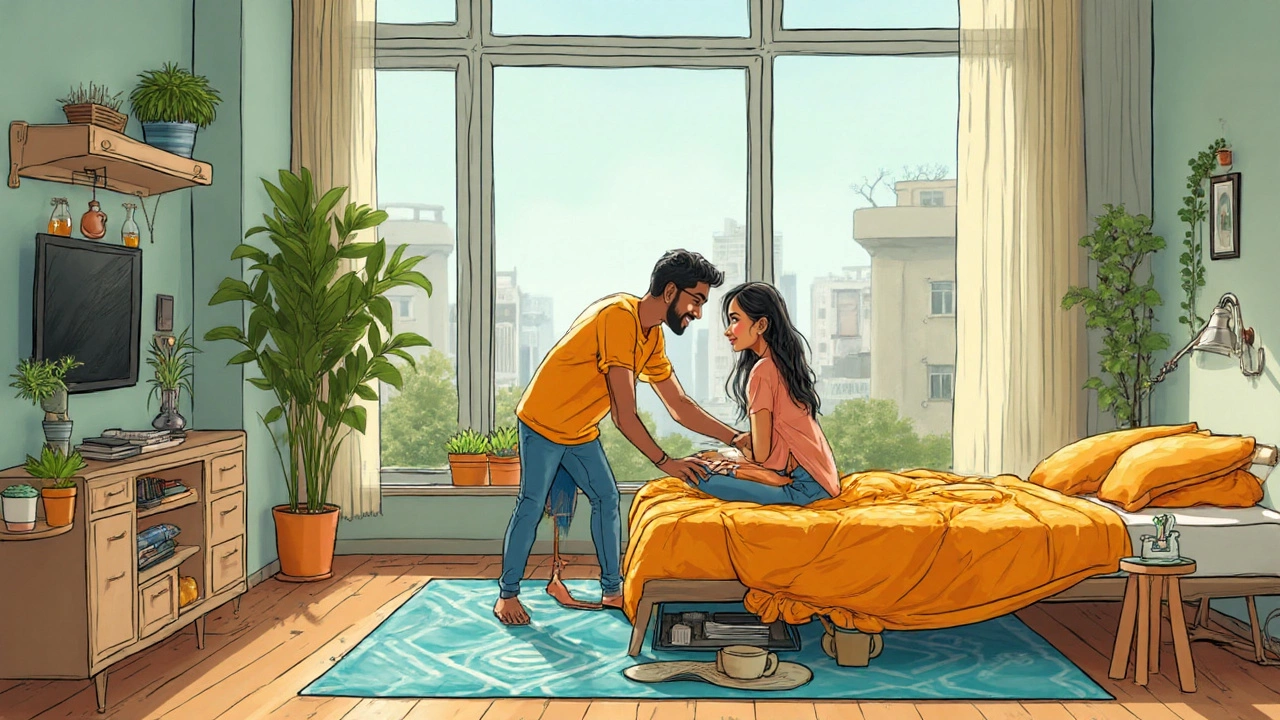
Is 600 Sq Ft Enought for a 1 BHK? Final Thoughts, Real Stories, and Pro Tips
Let's be real: The comfort of a 600 sq ft 1 bhk depends as much on personality and lifestyle as on the blueprint of the apartment. Seen some magic? A Mumbai-based doctor squeezed a treadmill, a mini-library, a fold-out guest bed, and even a 4-seat dining table into his 600 sq ft, thanks to a pro designer and a ruthless decluttering spree. Meanwhile, a young couple in Pune ditched a formal dining table for a cozy breakfast counter attached to their kitchen, freeing up six feet for yoga and pilates. Their trick? Wall hooks for bikes and shoes, a foldable desk, and hidden under-bed storage.
On the flip side, some folks struggle. When you move in with lots of stuff—say, three sets of crockery, tonnes of books, or seasonal sports gear—things can get out of hand. Friends suddenly start avoiding those weekend sleepovers. Visitors notice shoes spilling out of the doorway, and the place just feels like a storage unit with a sofa stuck in it. The truth—for most people riding solo or as pairs, 600 sq ft gets the job done, if you focus on the essentials and let go of the “bigger is always better” myth. For families, or hardcore hobbyists with lots of gear: maybe not.
If you’re still not sure, consider trying out a similarly sized rental or visiting show flats with your actual stuff count in mind. Remember, it’s the design, layout, and flexibility that make or break a space this size—not just the raw number on the lease.
